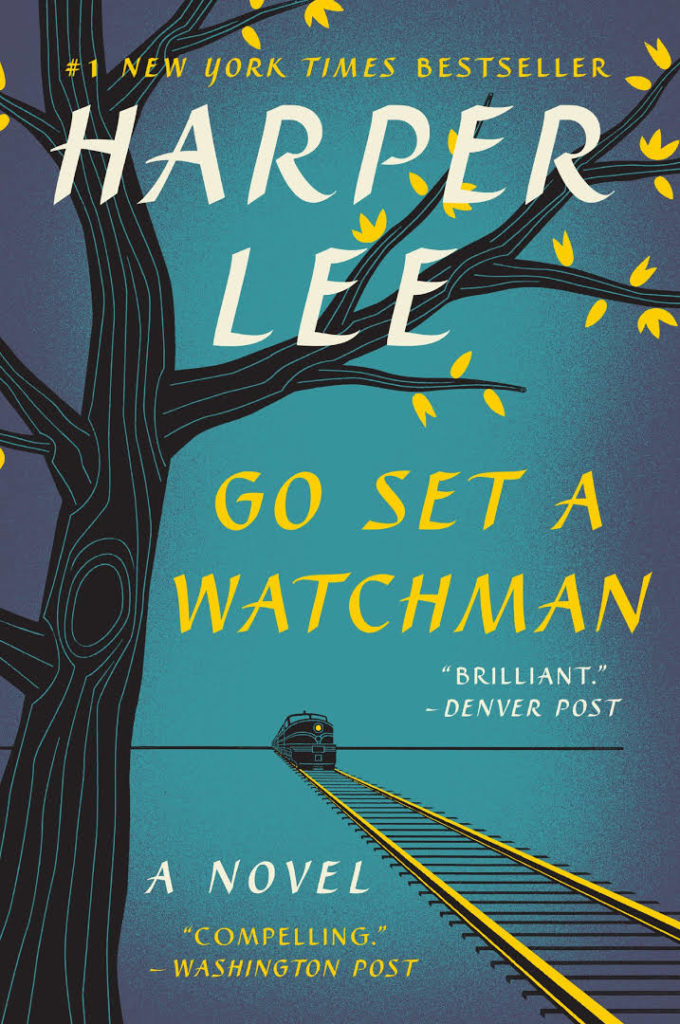Karen’s Pick
September 2015
Go Set a Watchman
Harper Lee, Harper Collins July 14, 2015, 278 pages
It was hard to contain my excitement after hearing that Harper Lee’s new novel, Go Set A Watchman, would be released on July 14, 2015. Touted as a sequel, to the classic, To Kill a Mockingbird, I could only imagine the people Scout and Jem had become or what injustices our beloved Atticus had righted, or how the small fictional town of Maycomb (Alabama) was now a community of citizens who respected, or at the very least, tolerated one another. Unfortunately, the reader soon realizes this is not the case and that Go Set A Watchman is not a new story but rather a first draft for Lee’s only “real” novel To Kill a Mockingbird.
Immediately, the reader is reminded of how alive Lee’s writing can be. The first few chapters of the book are beautifully written. Alan Gopnik, critic for The New Yorker magazine wrote that Lee’s writing is at times magical:
“There is a little set piece about the arrival of a train at a flag stop that makes one feel nostalgic for one’s Southern childhood even if one never had a Southern childhood.”
No matter how well crafted the writing, all too quickly the plot becomes awkward and choppy, leaving the reader unsure of Lee’s intent.
Scout, now a 26-year-old and referred to as Jean Louise travels home for her yearly visit to see the now ailing Atticus. For those who have read TKM, several new Maycomb citizens are introduced in GSW. Atticus’s brother Dr. (Jack) Finch, is a commanding and highly likeable personality and Jean Louise’s confidant, and Henry Clinton, is the long-time suitor of Jean Louise and Atticus’ protégé. Missing from GSW is Boo Radley, and brother Jem, who has much less of a presence.
Much has been said about Scout’s traumatic discovery that Atticus is a member of the Citizens Council, a racist and almost Klan-like group of Maycomb’s finest. Jean Louise knows her father to be the most honorable man imaginable, whose integrity, humor, and patience makes him larger than life. This the time when the reader must step outside the book to remember the disconnect we have with our own “reality ” at the age of six, and our coming –of-age vision of the same truth which is sometimes harsh. It is when Jean Louise confronts Atticus with being a racist the reader gets to hear the clear and disturbing voice of race relations in the South the 1950’s. When confronted by Scout about his views on race Atticus explains to Scout,
Have you ever considered that you can’t have a set of backward people living among people advanced in one kind of civilization and have a social Arcadia?
Fortunately the beautiful style of writing that is so distinct in TKM is apparent in many powerful passages. When a desperate and confused Jean Louise runs to Calpurnia, the now retired cook to the Finch family, to better understand the extent of the racial discord in Maycomb she asks,
“Cal, Cal, Cal, what are you doing to me? What’s the matter? I’m your baby, have you forgotten me? Why are you shutting me out? What are you doing to me?”
Calpurnia lifted her hands and brought them down softly on the arms of the rocker. Her face was a million tiny wrinkles, and her eyes were dim behind thick lenses.
“What are you all doing to us?” she said.
If the publisher had been upfront with the readers and presented Go Set a Watchman as the draft it is, it would have been a great discussion tool for students of writing and literature. Lee’s Go Set a Watchman will never be a classic, however, the writing is often as powerful, and stylistic as Lee’s “other” book. With a little imagination and interest on the part of the reader, it is clear how Go Set A Watchman evolved into one of the most enduring novels of the 20th century.
